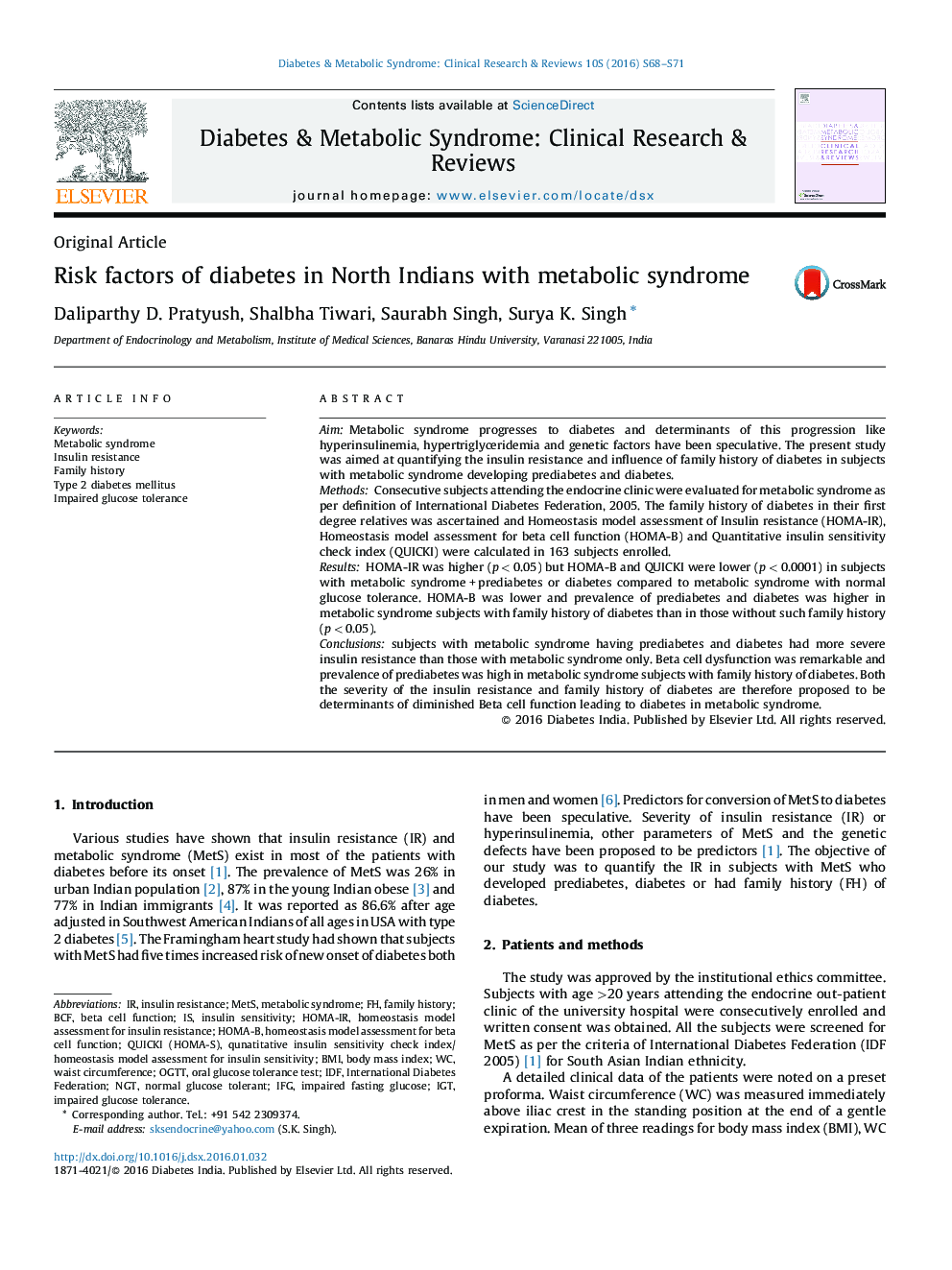| Article ID | Journal | Published Year | Pages | File Type |
|---|---|---|---|---|
| 2909801 | Diabetes & Metabolic Syndrome: Clinical Research & Reviews | 2016 | 4 Pages |
AimMetabolic syndrome progresses to diabetes and determinants of this progression like hyperinsulinemia, hypertriglyceridemia and genetic factors have been speculative. The present study was aimed at quantifying the insulin resistance and influence of family history of diabetes in subjects with metabolic syndrome developing prediabetes and diabetes.MethodsConsecutive subjects attending the endocrine clinic were evaluated for metabolic syndrome as per definition of International Diabetes Federation, 2005. The family history of diabetes in their first degree relatives was ascertained and Homeostasis model assessment of Insulin resistance (HOMA-IR), Homeostasis model assessment for beta cell function (HOMA-B) and Quantitative insulin sensitivity check index (QUICKI) were calculated in 163 subjects enrolled.ResultsHOMA-IR was higher (p < 0.05) but HOMA-B and QUICKI were lower (p < 0.0001) in subjects with metabolic syndrome + prediabetes or diabetes compared to metabolic syndrome with normal glucose tolerance. HOMA-B was lower and prevalence of prediabetes and diabetes was higher in metabolic syndrome subjects with family history of diabetes than in those without such family history (p < 0.05).Conclusionssubjects with metabolic syndrome having prediabetes and diabetes had more severe insulin resistance than those with metabolic syndrome only. Beta cell dysfunction was remarkable and prevalence of prediabetes was high in metabolic syndrome subjects with family history of diabetes. Both the severity of the insulin resistance and family history of diabetes are therefore proposed to be determinants of diminished Beta cell function leading to diabetes in metabolic syndrome.
